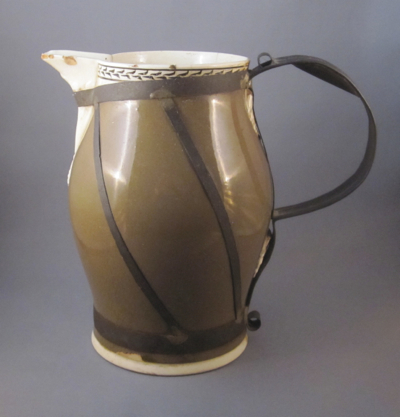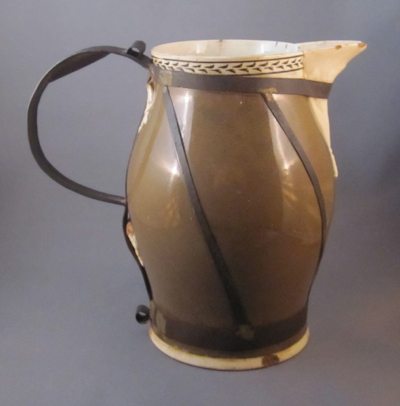I purchased this 7-3/4″ tall jug from a collector last February and it quickly became one of my favorites. The simple form, hot chocolate colored glaze, and impressive tin handle with strapping make it a visual delight. When I brought this jug to one of Don Carpentier’s workshops at Eastfield Village this summer, he marveled at it and said it was something special. So rather than try to describe it myself, here is what Don had to say:
“It is a baluster form English earthenware jug 1790-1810. It is technically know as diptware because it was decorated with slip. The design at the rim inslip-inlaid checkered rouletting. Made by impressing the design in the leather hard clay on the lathe with a roulette tool and then flooding the area with dark slip. When the slip sets up to leather hard it is put back on the lathe and trimmed down flush with the surface of the body and the design is inlaid.”
The tinsmith who crafted the metal replacement handle did a fine job securing it to the jug, by means of straps running diagonally across the ovoid form. He also added a comfortable hand support, thumb rest and small curled flourish at the bottom. Sadly, some of the jug’s best features are covered by the tin handle, such as the intricate leaf terminals and almost half of the checkered rim. But without the added handle, the original owner would not be able to use the jug for its intended purpose and I would have nothing to write about today!
This jug with similar form and rouletted black slip-filled herringbone mid-band, shows what the original loop handle on my jug may have looked like.
Photo courtesy of Prices4Antiques














